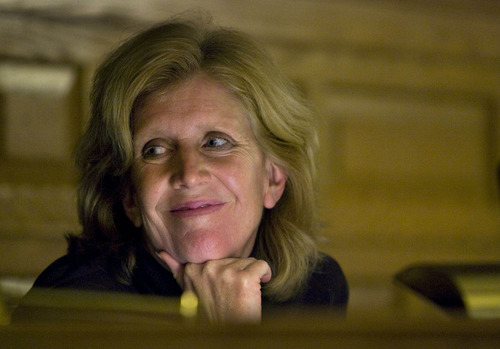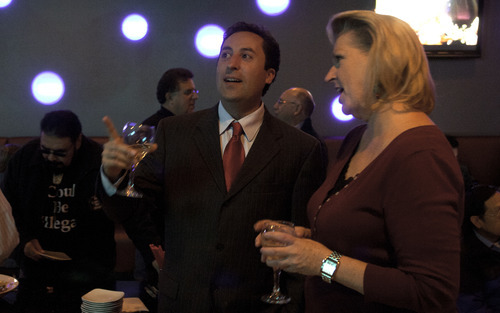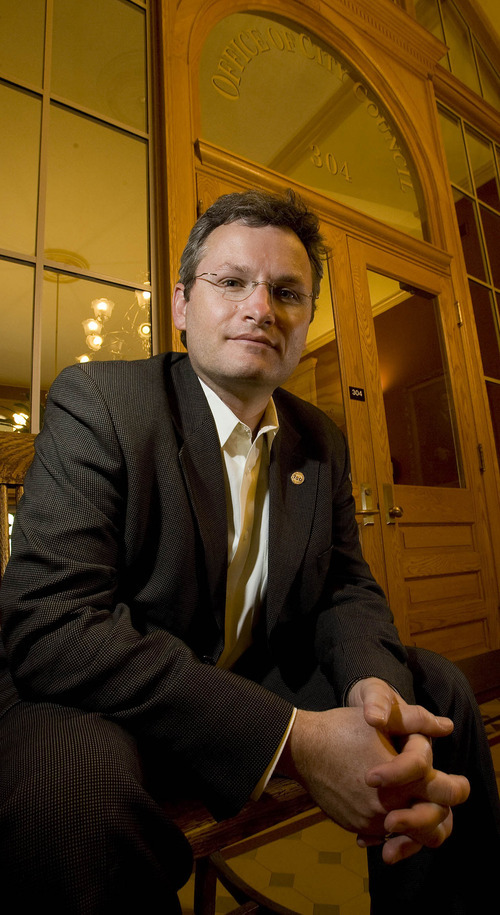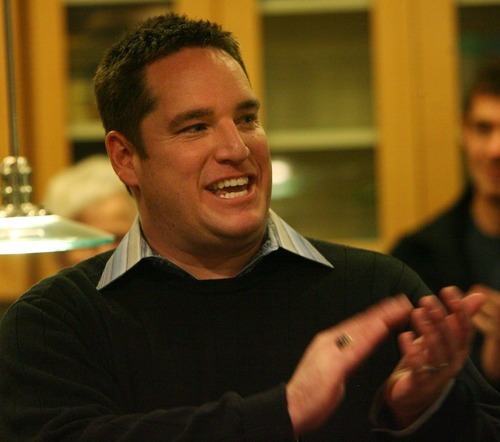This is an archived article that was published on sltrib.com in 2012, and information in the article may be outdated. It is provided only for personal research purposes and may not be reprinted.
The progressives — or are they the populists? — are commandeering Salt Lake City Hall.
Secret-ballot leadership elections have placed Soren Simonsen, Sugar House's long-languishing liberal, in charge of the City Council and ambitious newcomer Kyle LaMalfa, a west-side organizer, over the Redevelopment Agency.
These two, with the leadership backing of freshman Democratic insider Charlie Luke and lefty professor Luke Garrott, embody a new coalition intent on bottom-up government that empowers residents to push their pet initiatives. The group wants to beef up council staff, press more council initiatives, streamline internal rules to strip away "roadblocks," and tilt City Hall's lawmaking power from Mayor Ralph Becker to the council.
"Most of the legislation we've seen in the last couple years has originated from the Mayor's Office. That seems backwards," says LaMalfa, who hopes to rip the red tape and provide a path for what he calls citizen ordinances. "The voice of the council is one that is critical. We are the most closely connected to our neighborhoods."
Both newcomers — Luke will serve as council vice chairman — campaigned on such activism. Now, the leftward leadership lean could signal a seismic shift in city policies, especially since all four pledge not to be a "rubber stamp" for Becker.
Even so, the new coalition, whose members won leadership spots mostly in sharply divided 4-3 votes, downplays any partisan turn. Instead, the allies say the move is more populist than progressive, predicting the council soon will ditch the status quo and act as an "ideologically neutral" liaison for neighborhood interests.
The other three members maintain it is inappropriate for the part-time council to behave like a full-time Congress. After all, they say, the council signs off on budgets but doesn't control city departments. And if every citizen request gets calendared for a 20-minute briefing, time and taxpayer dollars would be wasted, and the city's business would bog down.
How bitter is the divide? The three dissenters — Jill Remington Love, Carlton Christensen and Stan Penfold — voted against ratifying the results of Simonsen's one-year chairmanship. What's more, 2012 marked the rare moment that the council's vice chairman — Penfold in 2011 — was not elevated to chairman.
Love says she knew the minute the November election was over that the new foursome would run the show. Chalk it up to loyalty, she says, since Simonsen and Garrott logged valuable campaign hours for victors Luke and LaMalfa.
The new bucks, who were not endorsed by Becker, have not backed off from their campaign rhetoric about empowering council members to do what they believe legislative bodies should do.
"Endorsements are nice, but our constituents looked for a different direction," Luke says. "It's important to fully recognize and use our legislative capacity."
The shift could mean more emphasis, for instance, on the gritty, west-end Granary District and soon-to-expire Sugar House RDA, and perhaps a new RDA to further invigorate State Street.
Christensen is dubious that the new group will be effective, suggesting complicated issues could splinter the "coalition." And he defends the deliberative nature of the legislative process, arguing problems emerge when it gets rushed.
"If they're looking for a coronation, I think they're a bit optimistic," he says. "It doesn't do me any good to sit and pout, but, on the other hand, I won't go along with everything."
Christensen also says the rubber-stamp tag is neither fair nor accurate, noting he served as campaign co-chairman for Becker's initial opponent, Dave Buhler, in 2007. "You can wave your hand over my head — you'll find no puppet strings there."
Penfold, who was disappointed but "not devastated" by the leadership vote, says he doesn't buy the idea that his politics got in the way. "There are not a lot of people who are more left than I am."
But he warns an emerging us-vs.-them tone could paralyze progress. The Avenues representative insists it has not been difficult to get items on the agenda. And he doesn't worry about aligning with the mayor. "I don't know if that's a bad thing," Penfold says, "because there's been some pretty progressive stuff coming out of the administration."
Garrott, LaMalfa's No. 2 on the RDA Board, argues all the "legislative mojo" has rested with Becker, who has easily advanced his agenda. He wants to see an institutional shift that fosters grass-roots initiatives.
"Neighborhoods should be able to plan their future better," Garrott says. "The administration is behind in advancing master plans. We want to do neighborhood planning different. Much more bottom up."
Garrott would push robust bicycle legislation, zoning for more commercial nodes and more affordable housing. He advocates for more policy analysts and council attorneys — if the funding could be reallocated from other areas. And he hopes to reduce from three to two the number of council sponsors needed to place a subject on an agenda.
"I see it as more populist than progressive or leftist," he says. "We want to be an able partner with our neighborhood groups on initiatives."
The new strategy troubles Love. The council, she says, has long been committed to neighborhood solutions on, for example, lights and trails.
"It's about curb-and-gutter issues. They want better sidewalks, they want better streets. And that's not legislative, that's the budget arm," she says, noting Becker's agenda has been anything but stagnant. "Luke [Garrott] is really comfortable creating the debate and throwing the grenades. That can't be done in leadership."
In leadership six of her 10 years, Love points to the good-landlord program, historic-preservation reform and a taxicab overhaul as council-generated moves.
Dictating to departments or adding council staff when city employees are asked to do more with less, she argues, is unfair. "Is it about kingdom building or is it more sincere than that? We need to check ourselves."
University of Utah political scientist Matthew Burbank says the wisdom of the new direction remains unclear.
"Frankly, this is an experiment," he says. "While there may be some good things that come out of this, this may also be the kind of experiment that gets bogged down ... particularly with the notion of making it very easy to get things on the agenda. You don't want to entertain every idea from every resident who wants a hearing."
But Simonsen would open government's arms even wider, noting few legislative bodies put up such stringent "roadblocks."
"I'd like to empower every council member," he says, "to bring their own priorities forward without having to go through an agenda-setting process."
His own stymied ideas range from stricter preservation of the Sugar House business district and more aggressive air-quality measures to upgraded bus stops and cinching the demolition loophole that led to the much-maligned "Sugar Hole."
Simonsen, rejected for leadership slots the past four years, says he's not considering a third term at this point so he can go for broke. "I don't have to follow a pattern of the way things were done in the past."
Whether the coalition succeeds or fails, Love knows this much: "You're going to see a lot of split votes."
Leadership vote reveals rift
In an unusual move, three Salt Lake City Council members voted against ratifying the election of Soren Simonsen as the 2012 council chairman. The 4-3 vote earlier this month, pitting council members Carlton Christensen, Jill Remington Love and Stan Penfold against a coalition featuring two council newcomers, illuminates a new division inside City Hall. The dissenters defend the move: "It's the only way to make a statement that the house is divided," Christensen says. —
Council plans retreat
The new-look City Council is holding a daylong retreat starting at 8:45 a.m. Tuesday at The Leonardo, 209 E. 500 South, to shape its 2012 priorities and revisit internal rules.











